Clearly, the arrival of the Honda CRF250X is this year's biggest news in off-road bikes. There is no doubt that the machine itself is noteworthy, with its light and nimble feel, excellent chassis and well-engineered features. Plus, there is the fact that the X is 50-state-legal. It even gets great gas mileage—sometimes more than 30 miles to the gallon. Perhaps more important, the CRF250X is a signal from Honda that big red is again serious about producing performance off-road machines. The last time Honda had a performance off-road bike this desirable was when it introduced the XR400R. But where the XR400R lagged behind the motocross technology of the time, the CRF250X is way contemporary.We've lived with the X for many miles now and have had a huge variety of riders test it, including male riders from 5 feet 3 inches to 6 feet 5 inches tall, weighing from 110 to more than 210 pounds, and female riders from 5 feet 3 inches to 5 feet 10 inches tall, who all amazingly claimed to weigh 105 pounds. We spent most of the miles on tight and technical trails in the mountains, since that is where the bike is the most fun. We also rode in the open desert, with its high speeds and giant whoops. We even did one mud run: the 25th annual Soboba Trail Ride. During our time with the bike, we've discovered some excellent closed-course performance modifications and a few potential problem areas to note. As with almost any Honda, the aftermarket has jumped right on the CRF250X, and plenty of good products are now available.With the CRF250R there have been reports about engine-longevity issues—specifically short piston and valve life. The CRF250R and CRF250X share the same piston and valves, but apparently, our range of off-road riding styles doesn't include the sustained high-rpm pulling that motocross does. Plus, the X model has a different cam, and it makes its most-effective power far lower in the rpm range than the R does. Whatever the case, we estimate that our bike has completed at least 75 hours of riding time—perhaps even more than 100—and that use includes two tough days on the dyno! The valve clearances have only just tightened up, and the engine has the original piston. We tore down the engine when the valves got tight. The exhaust valves were .003 tighter than specs, and the intakes were .002 and .003 too tight; but the valves still sealed perfectly. The ring end gap was .012, and the piston clearance was .003. Clearly, the engine was happy to get new rings and a piston, but even at its advanced mileage, the engine was in no immediate danger aside from needing a valve adjustment.It's been a dry year here in Southern California, so the bike got muddy only once; but the chassis hasn't needed grease. Granted, Honda usually does a better job preparing our test bikes than a dealer would do, but there have been no squeaks, squeals or signs of problems. We have replaced one fork seal; one set of rear brake pads; one rear disc with rock damage; three radiators damaged in low-speed falls (but only one that actually started losing coolant); and one seat that got too soft for comfort. We also replaced a front brake lever; two sets of clutch plates and springs; and a clutch cable that got burned on a headpipe. We'll chalk the cable up to mechanic error, and the bent and damaged parts to customer abuse. All of the original plastic is still intact—including the headlight lens—though scratched and a bit worn-looking. The original chain and sprockets are also intact.1. We felt the need to change the top triple clamp to give taller riders more room and install hand guards. Our taller riders felt the riding position was a bit scrunched, so we tried an Applied triple clamp and bar mount that positioned the bar forward and 5mm higher. The clamp was a very pleasant surprise; it contained all the brackets needed to mount the headlight and odometer, and the fit was perfect. The standing riding position was greatly improved for 6-footers. We started with wraparound, plastic Acerbis units that were light, unobtrusive and great for brush, but they did little to prevent lever damage when the bike was dropped. We finally opted for Enduro Engineering parts.2. We found a lot to like about the X chassis and running gear but learned the bike is indeed more than a CRF250R with lights. The seat, subframe, sidepanels, airbox, air filter, airboot and clutch-cable setup are all unique; so are the right radiator and the judder spring in the clutch pack. Speaking of the radiators, Honda's aluminum perimeter frame basically requires that they be mounted outboard of the frame spars. Honda's attempts to subtract weight have led to delicate radiators that receive little protection from the frame or body parts. Almost any tipover that touches the radiator shroud will deform the radiator to some extent. One rider lost the front wheel over the edge of a sidehill trail at barely walking speed, and the radiator was wadded to the point of leaking coolant. We aren't talking end-over-end flips, just oh-damn-I'm-too-short sort of mishaps.
3. After squashing some radiators, we tried both Works Connection (see photo 2) and Devol Racing radiator guards.4. The clutch cable has to run on the opposite side of the engine from the R model thanks to the electric starter. That means the cable and the exhaust pipe are on the same side of the bike. Keep an eye on the cable to keep it safe—especially with some of the aftermarket exhaust systems.5. The seat is the only item that caused any concern. Honda dished the underside of it to clear the battery, so the X seat pictured on the left (which you ride seated more than the R model's) has roughly an inch less seat foam. As a result, riders picky about seats will find the foam gets sacked out faster than most Honda models. Short riders hoping to cut some foam out of the seat will also be in for a surprise.6. IMS has a larger tank for the X, and it proved a well-designed product. The petcock and shrouds mounted easily. It doesn't use the stock front mount but instead adds two L-brackets to the side of the tank. Ours mounted pretty easily; the natural color makes filling it a breeze, and it held almost exactly the 2.8 gallons that IMS claimed. Most important, the IMS tank appeared to be no wider than stock and doesn't intrude on the excellent ergonomics.EngineDuring our testing, we used our 24-Hour test bike. We had opened up the airbox; changed the jetting to a 135 main jet, an NCYQ needle in the fourth position and a 42 pilot; and set the fuel screw at 2.0 turns out. Honda has a specific closed-course-competition setting it recommends, and we had a second bike modified to those specifications. It uses an open airbox and a cam and headpipe from the motocross model. Naturally, it also needed jetting. We had the best results with a 150 to 155 main jet depending on the pipe we used and the altitude at which we tested. We used an NCYQ needle with the clip in the third position from the top. The pilot was a 42, and the fuel screw was set at between 1.75 and 2.0 turns out.Note:
The part number of the NCYQ needle is not listed in Honda's CRF250X or CRF250R parts books, but rather the CRF450R book. The Honda part number for the NCYQ is 7531049. In getting the information about the elusive needle, Eric Crippa says that he recommends a NCVQ, which is a ½ clip richer than stock, set on the 3rd clip position. Its part number is 7531098.1. Hondaline is selling No-Toil air filter oil and cleaner under its own brand name. One of our editors has switched to the biodegradable oil and soap. The filters became amazingly clean with just the powdered soap and water. You do have to let the filters air dry completely before they can be oiled. Even though the oil and soap are claimed to be safe enough to pour down the drain, the soap is tough on bare hands, so use gloves. We also found that the used and dirty wash water kills grass. We took one batch of filters to the laundromat, and they came out looking like new and smelling sweet.2. The radiators are a weak point. The outer row of fins is completely crushed on this radiator from low-speed tipovers.3. Even though the valves were tight and needed adjustment, they still sealed to the head perfectly.4. The cylinder still shows obvious crosshatches from the factory. This bore is still in great shape.5. The piston and rings were happy to retire, but we could see no imminent danger of failure. The subtle grooves in the face of the piston were worn smooth, and the black coating on the piston was starting to flake away and wear off.We also tested a variety of pipes for the bike, but the X didn't seem to like open, loud pipes, and we can't see taking a bike Honda worked so hard to make quiet and making it loud. We tested only pipes that meet California's 96-decibel standard. We didn't want pipes that are simply motocross models with corks stuck in the end, but instead searched for dedicated, quiet models.Only the FMF Q has a built-in mechanical baffle (that cannot be "uncorked" by removing bolt-on parts), and as a result, it was by far the most quiet, yet it made excellent power. The Big Gun Quiet Series, Pro Circuit 496, White Brothers E2 and Yoshimura TRS all have removable baffles that restrict only the end of the pipe, and they all were quite a bit louder. For a CRF250R, these pipes have the bonus of being performance pieces for the track that can be quieted for off-road use. The X is an unlikely track bike, with its wide-ratio transmission and soft suspension, and making the bike loud doesn't really help its performance. We dyno-tested each pipe with the stock X headpipe when possible, with either the R model headpipe or a larger header from the pipe's maker and with the R cam. The Big Gun and Yosh pipes are complete systems that don't appear to mate with any part of the stock system. With the stock X cam, the bike lost power up to almost 9000 rpm with a larger header pipe or a more-open pipe. It was almost as though you could have high-rpm horsepower or good torque, but not both. To a lesser degree, the same is true of the R model cam. It lost power at low rpm but made gains above 9000 rpm. Basically, the added power helps in a sand wash, but in a majority of trail situations you can't really use that high-rpm rush.See the dyno charts and notes about each of the pipes. Each chart has two baseline graphs with the stock muffler (baffle removed). One graph is with the X header, the other with the R header. As a general rule, all of the free-flowing (usually loud) pipes lost power up to 9000 rpm, and they weren't very fun or easy to ride with on tight trails. The X is one bike with which the peak horsepower numbers don't mean everything.While we were testing at Hungry Valley SVRA, we had the rangers there test the pipes for sound. You don't get much more real-world testing than that. The rangers are the pointy end of the enforcement of California's 96-decibel standard. It doesn't matter what one meter or another says if your bike doesn't pass the sound test when you go to ride. The rangers are trained in sound-testing procedures and have the proper equipment.Big Gun Quiet Series
Type: Full system
MSRP: $539Comments: The Big Gun (BG) Quiet Series has several features that set it apart from the other systems tested. For one, it is constructed of steel with a silver-colored, aluminized, thermal barrier coating. It is the only system that must use a dedicated header, since the BG doesn't joint in the same place as the stock system. The midpipe joins the header right behind the frame spar. The pipe includes a clamp, but it was very difficult to get the clamp on. Fortunately, the system sealed well at the joint without the clamp. BG quiets the exhaust through the use of high-end Silent Sport packing and a baffle with three unequal-size tubes for the exhaust to escape. The two methods combined for a second-quietest decibel rating of 90.3. On the CRF250X, that easily meets California and Michigan field-test standards.On the trail, the BG immediately displayed a healthy high-rpm pull, and it pulled longer than all but one other pipe. The excellent high-rpm power does come at the cost of midrange, though. For desert or open riding, the Big Gun is a great choice, and you will welcome the top-end rush. If the going is tight, technical and slippery, the pipes that make power lower in the rpm range are more effective and take less clutch to keep in the sweet spot.The fit was good, other than the fact that one pipe joint was hidden, and the mounting points all lined up pretty easily.FMF Q
Type: Slip-on muffler
MSRP: $329.99Comments: The FMF Q is the quietest of the pipes tested by 3 decibels. It notched a reading of 87! Decibels are logarithmic, so the sound energy approximately doubles with every 3-decibel increase; thus, the FMF is most-definitely easier on the ears during a long ride. The Q was also forgiving in other ways. Some of the pipes were a little finicky about jetting and altitude, but the FMF ran cleanly and strongly with both cams and with both headers. For off-road use, especially for tight trails, the stock X cam and header make the most-effective power, and the Q produces the best or within two-tenths of a horsepower of the best pipes from 4500 to 8750 rpm. That is the rpm spread in which you ride a great deal of the time.The FMF makes a good, grunty power delivery that worked on tight trails. The engine pulled very well from gear to gear. The Q also felt great with the R cam, and throughout the rpm range it was rarely more than a horsepower behind the best of the pipes on the dyno. The highest peak-power number we recorded for the CRF250X was 32.3 horsepower, and the Q made 32.1. That is very good performance for any pipe and is outstanding for the quietest pipe in the test.The fit is good, but the muffler uses an aluminum sleeve that adapts the Honda header (either one) to the beginning of the unit. It worked well, but the sleeve was a little difficult to remove. It isn't an issue unless you are changing the Q back and forth with another pipe. FMF does offer a PowerBomb header, but since it doesn't have a dedicated header specifically for the X, we tested with the stock header.Pro Circuit 496
Type: Slip-on muffler
MSRP: $399.95Comments: We used the then-new Pro Circuit 496 quiet exhaust on the stock bikes during our 24-Hour test and thought it worked quite well. Now that we have had more time with it on both the CRF250R and CRF250X, we still like it. As with most of the quiet pipes, the R stumbles a little when it is jetted for an open pipe, and you can put the quieter 496 on without making carburetor changes. The 496 goes right on both bikes, and since it requires no spacers, sleeves or gaskets at the joint with the header, installation offered little drama. The sound level was much higher than that of the FMF and a bit higher than that of the Big Gun at 93 decibels.With the stock X cam and header, the 496 worked very well. It had better off-idle pull than the Q and was very close to it in the low to middle rpm ranges. The FMF had a bit more top, and the Big Gun and Yosh have very strong top but were softer through the bottom.As is the FMF, the 496 is good with the larger header and the R cam but doesn't really stand above the FMF Q or White Brothers E2 in any area. Those two and the PC pipe are up as much as 5 horsepower around 6500 rpm compared with the Big Gun and Yosh.White Brothers E2
Type: Slip-on muffler
MSRP: $399.95Comments: The new White Brothers E2 quiet exhaust system is unique in its look and construction. The entire can is made in a single piece. There are only bolts attaching an end-cap at one end. As with the Big Gun, the quiet insert and spark arrestor can be removed for the track. This system is California-legal, at 95.2 decibels, but that is cutting the standard pretty fine, and we got that reading with brand-new packing. Even though the Hungry Valley rangers doing the sound testing calibrated their meters, the reading on another day might be a little different. WB's catalog lists a 94-decibel, FIM-legal unit, and we suggest trying to get that one.With the X cam and header pipe, the E2 was a pleasure to ride. As with the PC and FMF units, the E2 made good bottom and mid-rpm power yet pulled well on top. The dyno showed the E2 to be very close to the other two pipes but didn't show the highest numbers except at 6500 rpm.The E2 was the best all-around performer with the R cam and the WB header pipe. It was very close to the Big Gun and Yosh at high rpm but without the hole in the bottom they display. The advantage the E2 had (with the R cam) over the FMF and PC is slight on the dyno and small, but still noticeable, on the trail.Yoshimura TRS
Type: Full system
MSRP: $495.95Comments: The Yoshimura system is beautifully made, with a tapered header and a triangular rear can. The TRS is the only system we tested with its own heat shield, and is the only midpipe that has mounts for the stock X heat shield, which keeps heat away from the airbox. Yoshimura sells only race exhaust systems, but it includes a 96-decibel insert and spark arrestor with every system. Our system tested at just a hair more than 96 decibels with brand-new packing. Again, that is simply cutting the limit too closely, and it is above the Michigan standard. The Yosh was a bit soft off the bottom on the trail and on the dyno, but it is back in the game by around 7500 rpm. Although the advantage was small, the TRS made the most peak horsepower of any of the pipes with either cam installed (the difference is smaller with the R cam).On the trail, the Yosh pipe felt lively, and it appeared that the engine was happy and strong at high rpm. As is true of the Big Gun, the TRS sang on fast trails and in sand washes and required more clutch when the going was tight.ConclusionAfter many miles and our teardown of the engine, we are more impressed than ever with our CRF250X. Many riders who never thought they would be happy riding off-road on a 250cc four-stroke changed their thinking after riding the X. We are impressed with how well the bike is holding up; it still feels tight and new and looks good. It truly is the little bike that can.CONTACTS
Acerbis: 800/659-1440; www.acerbis.com
Applied Racing: 800/853-0555; www.appliedrace.com
Big Gun Exhaust Systems: 909/948-7029; www.biggunexhaust.com
Devol Engineering: 800/338-6599; www.devolracing.com
Enduro Engineering: 517/393-2421; www.enduroeng.com
FMF Racing: 310/631-4363; www.fmfracing.com
IMS Products: 909/653-7720; www.imsproducts.com
No Toil Industries: 877/NOTOIL1; www.notoil.com
Pro Circuit: 909/738-8050; www.procircuit.com
White Brothers: 714/692-3404; www.whitebrothers.com
Works Connection: 530/642-9488; www.worksconnection.com
Yoshimura R&D;: 909/628-4722; www.yoshimura-rd.com
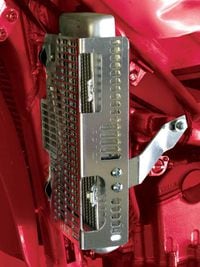
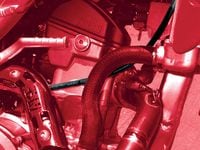
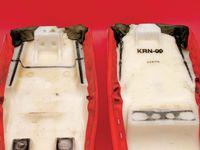
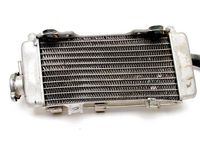
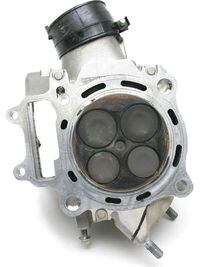
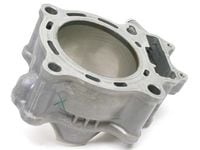
/cloudfront-us-east-1.images.arcpublishing.com/octane/AL2QOKCWUJDSDDFNONE4FOONL4.jpg)
/cloudfront-us-east-1.images.arcpublishing.com/octane/33UTMDHIH5B45HVOLFJ6GD76QY.jpg)
/cloudfront-us-east-1.images.arcpublishing.com/octane/44W4OD5KDZFD3FQWWHZV63P4TY.jpg)
/cloudfront-us-east-1.images.arcpublishing.com/octane/SQ3CEIVCOJF7FDERDVDKKPIC7A.jpg)
/cloudfront-us-east-1.images.arcpublishing.com/octane/LLLQLRK2DBH4PN66MDNA3AFJNY.jpg)
/cloudfront-us-east-1.images.arcpublishing.com/octane/5DMU4K752FBWLLJD432GRAAH2A.jpg)
/cloudfront-us-east-1.images.arcpublishing.com/octane/TGHDVMIODJC4BNKJDZKKTSWXWI.jpg)
/cloudfront-us-east-1.images.arcpublishing.com/octane/5KYMT24REJEFPNO2J2M76MXERM.jpg)
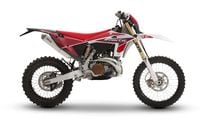
/cloudfront-us-east-1.images.arcpublishing.com/octane/3GXGR3EKSNH5NI3CWHV5SJ7TXE.jpg)
/cloudfront-us-east-1.images.arcpublishing.com/octane/JEU3ONDWEFCAZNAZJOU24OJ2PM.jpg)
/cloudfront-us-east-1.images.arcpublishing.com/octane/JQ6LMK6LLBAQJIL2AH56UIUKWU.jpg)
/cloudfront-us-east-1.images.arcpublishing.com/octane/QUSF4LLRM5DDPCJW25RINQRJPE.jpg)
/cloudfront-us-east-1.images.arcpublishing.com/octane/FYDGK7GF4JBPXERA5RAZPY3YJI.jpg)
/cloudfront-us-east-1.images.arcpublishing.com/octane/JE7KMNASNRGR7FLYAFRZAR7T7E.jpg)
/cloudfront-us-east-1.images.arcpublishing.com/octane/7RCNKJJNXBF4LBKZXE2INNWZUY.jpg)
/cloudfront-us-east-1.images.arcpublishing.com/octane/BAGM5E4EWBHFNLZOXMSLOLKQGU.jpg)
/cloudfront-us-east-1.images.arcpublishing.com/octane/RSX65VBXY5FRLIY4LN6WLOKAFM.jpg)
/cloudfront-us-east-1.images.arcpublishing.com/octane/3EO2CNKWUFBGNMGNJPETW5HCNY.jpg)
/cloudfront-us-east-1.images.arcpublishing.com/octane/IYHM55XRNVHF3DSS3467PZ7ONQ.jpg)
/cloudfront-us-east-1.images.arcpublishing.com/octane/L7K3FIINEBHMZI2TXTUE4FXH7I.jpg)
/cloudfront-us-east-1.images.arcpublishing.com/octane/XE7P5YXNZZDUTIGW4YNWQRDVY4.jpg)
/cloudfront-us-east-1.images.arcpublishing.com/octane/AV55DOHQ3BEXJLPWR6UWLYUSAQ.jpg)
/cloudfront-us-east-1.images.arcpublishing.com/octane/MMROGOYHXZAYDC4RKIDJ4VRSGA.jpg)